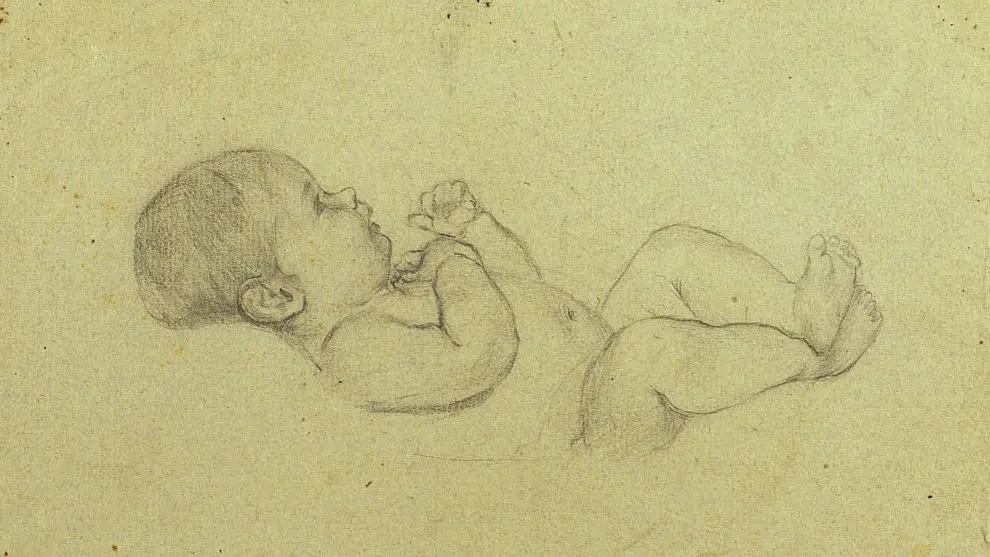In a world where everything changes in a heartbeat, book reviews become old before readers have time to discover that a book was even published. This is even truer in the realm of scholarly publications, and even more so when these deal with the ever-changing conditions of abortion rights and crimes.
Nonetheless, a recent collaboration between Pilar Zambrano, Professor of Human Rights and Political Thought at the University of Navarra, and William L. Saunders, Director of the Program in Human Rights at the Institute of Human Ecology, Catholic University of America, resulted in the publication of a volume that is, two years out from publication, both extremely relevant and incredibly timely. Unborn Human Life and Fundamental Rights. Leading Constitutional Cases under Scrutiny. With concluding reflections by John Finnis, the book is a collection of scholarly, yet quite accessible, essays which explore the ways national and international courts have dealt with the issue of abortion and prenatal life in eleven Western countries.
In quite an original way, the book addresses abortion by courageously exploring the legal nature and precise juridical arguments for women’s access to it, casting serious doubts on the ubiquitous narrative that abortion is a ‘human right.’ The essays accomplish this by illustrating the diverse (and dubious) paths that led to contemporary abortion regulations in the different countries; paths that were mostly traced by the judiciary. Its timeliness is then self-evident, with the potential overturning of the abortion-as-a-right legal narrative in the United States via the Dobbs case. It is indeed not only possible but perhaps even desirable that the Supreme Court justices will consult these essays before once more deciding whether women’s supposed autonomy should remain substantially unlimited, or whether the unborn deserve more coherent protection from the law. Such timeliness, moreover, confirms one of the book’s explicit messages: that courts have gained incredible power over the last forty years. This power has not only legitimized millions of abortions worldwide but is now also in the process of dismantling existing legal protections at the end of life. This has clear international ramifications: both the Supreme Court of Canada, in 2015, and the Italian Constitutional Court, in 2019, have in fact already declared that assisted suicide is not always a crime.
One of the greatest merits of this book lies in its approach to the issue, which is strictly legal. The abortion-as-a-right doctrine is not challenged by recourse to moral, ethical, or religious arguments, nor does its rejection suggest or require adherence to any specific partisan worldview—it simply expects the reader to have three things: a) belief in the universal and innate nature of human rights; b) respect for the rule of law; and c) scientific and intellectual honesty. There is nothing religious here, nothing sectarian. At the same time, the affirmation of the unborn’s right to life does not rest on merely procedural or literal grounds, as it is often the case in U.S. constitutional law and in the originalist and textualist tendencies of pro-life scholars. The core of the argument rests in the scientific evidence provided by modern embryology, along with critical scrutiny of the various juridical bases for its decriminalization.
On the one hand, as most authors point out, modern science proves that the embryo is a human being. His or her right to life is therefore implied by each and every constitutional provision and international document that declares, or that is interpreted as declaring, the inviolability of human life. From the moment of conception, the unborn possess the radical capacity of human existence, just as sleeping individuals do. They therefore deserve the same legal safeguards.
On the other hand, the comparative analysis of the different legal systems shows that decriminalization of abortion, with the sole exceptions of the U.S., and of the recent Irish referendum, typically rests on questionable and at times even contradicting premises that cannot support the qualification of abortion as a fundamental right. If fundamental rights are “universal,” in fact, the existence of such a range of national solutions seems to prove the opposite about abortion. The book underscores that criminal bans on abortion exist throughout the Western world. The right to life of the unborn is explicitly recognized by several laws and courts precisely where abortion is—under certain circumstances—legal. The practice of abortion is therefore generally tolerated by the law, but nothing more. In sum, the idea that a woman’s self-determination may legitimately result in the right to destroy prenatal human life seems in fact to have been an almost exclusive product of a rather creative U.S. Supreme Court.
As illustrated in an essay by Professor Dwight Newman, Canada adopted the idea of abortion-as-a-right later on, but that happened through the sole opinion of one Supreme Court justice, Bertha Wilson. Wilson was the only member of the Supreme Court in 1988 to describe abortion as a “right.” Her opinion, however, came to be the most popularly known expression of that judgment. That sole opinion, moreover, became the precedent for judgments like the one that very recently decriminalized assisted suicide. The rest of the world, in the meantime, had taken a different course.
All the other papers in the book remind the reader that national criminal codes still punish attempts to take the life of the unborn. The existence of such norms, and of such crimes, shows that today’s protection of life rests on an unstable balance. On the one hand, there is a product of conception whose life is protected by the law against a third party’s aggression; on the other, there are embryos lacking any form of juridical guarantee when facing the supposed autonomy of a mother or when used for medical research. A credible system of human rights, however, cannot tolerate this incoherence. As articulated by Professor Juan Cianciardo, whose essay focuses on the protection (or lack thereof) of unborn human life in the Inter-American system of Human Rights: “It is contradictory to claim the universal and absolute character of human rights while at the same time rejecting their application to all human beings. These inconsistencies are there in plain view: what has occurred in Guantánamo (the virtual removal of the status of person from a group of adult human beings) is much more closely related to decisions in cases such as Roe v. Wade or Artavia than might appear at first sight” (p. 182).
In his concluding observations, Professor John Finnis openly admits that parliaments have the power to enact unjust laws. “It goes without saying that legislatures and constitutional referenda, though in many ways their public deliberations are more likely to illuminate the moral and related social issues at stake in such ‘reforms,’ are capable—like courts—of introducing and imposing morally repugnant or inept rules of law.” When a similar course of action is initiated by tribunals, however, the matter is much worse. By denying the right to life of the unborn, tribunals violate the most basic human right they are required to uphold. Their action, Finnis argues, is far less visible and therefore more repugnant to a democratic state since judges’ decisions “often conceal” the ethical presuppositions they are built upon. They do so “because they know that, presumptively, it is not their business or professional competence as judges to consider such matters, but rather to identify and apply settled law.” As Finnis concludes:
The fish rots from the top, and for elites it has been a matter partly of chance circumstances whether the desired changes in fundamental law are affected by judicial action (as in the United States and Canada), police inaction (as in Australia), legislative inaction (as in England), or carefully managed referendum (as in Ireland). But most widely corrupting and regrettable is judicial activism in the service of such fundamental and unprincipled violations of equality.
Having revealed some of the book’s conclusions, a few words about the essays: notwithstanding their academic nature, the articles are largely accessible to a lay audience. These scholarly contributions contain several references to specialized sources and literature and a few lines often summarize judgments that alone would be—and have been—subjects of full essays and even books. Nonetheless, their authors preserve clarity. Their language is transparent, their reasoning consequential. Every article provides information that any reader will find both highly instructive as well as sufficient to unsettle any previously-held view on abortion as an internationally recognized human right. The legal scholar, at the same time, may see these articles as stimuli for further investigation.
The twelve articles contained in this volume were authored by law and legal philosophy experts of different nationalities and backgrounds. Zambrano and Saunders, the editors of the book, are themselves the authors of two short essays in it that focus, respectively, on the U.S. ‘judicial interference’ in the protection of prenatal life, and on Argentinian constitutional pronouncements on the right to life before birth.
As a premise, the editors’ foreword suggests that human rights declarations should contain an explicit provision defending life and personhood, “from the moment of conception.” One such provision is found in the American Convention on Human Rights. Its presence, they argue, slowed down—although it did not prevent—the emergence of an abortion-right doctrine in Latin American jurisprudence. They also underline how, regardless of the particular wording adopted by the positive law, all legal discourse rests on moral premises and inevitably develops according to their content. The importance of such premises becomes even more evident when one deals with constitutional provisions and international bills of rights: the universal and abstract nature of fundamental rights, in fact, demands the interpreter to fill mere words with actual and particularly meaningful content.
The first essay, authored by Saunders makes two points worth mentioning. First, it offers a clear description of how the U.S. Supreme Court’s judgments imposed the designation of abortion as a constitutionally protected right. It also spells out the inevitable consequences of this principle in other legal spheres, concluding that “failure to protect human life in one area of law will lead to failure elsewhere. Life must either be protected everywhere, or it is at risk everywhere.”
Another U.S.-focused contribution is one by Notre Dame Law Professor Gerard Bradley. The author posits that the U.S. abortion controversy is not really about the ‘personhood’ of the unborn, but rather about the exact definition of the circumstances in which destruction of human life is deemed permissible and justified. Today’s unequal treatment of unborn babies, at times protected by the criminal law and at times ‘legitimately murdered,’ echoes the times of slavery. As it was true for slavery, abortion is “a deeply divisive social practice contrary to natural justice, maintained only by dint of positive law, which elites preserved from criticism by suppressing dissent and protected from constitutional danger by making it a master principle of law.”
Professor Newman’s essay on the Canadian status of abortion law reveals how its Supreme Court did not ground its striking down of the abortion crime on any supposed ‘right to abortion.’ Today, however, “there are no criminal law restrictions on abortion on any ground or at any stage of pregnancy. Late-term abortion is entirely permissible—as is sex-selective abortion, or abortion for any other reason.” Reduced to individual autonomy, human freedom was recently and successfully invoked in Canada to also strike down laws protecting prostitutes from exploitation, and to legalize assisted suicide.
The following contributions focus on the European scene and on the decisions of some of its national constitutional courts. Professor Salvatore Amato underlines Italy’s incoherent protection of the unborn, the result of a very short and largely obscure judgment by its Constitutional Court in 1975. Similarly, Professor Angel Montoro starts off with a focus on the Spanish constitutional decision of 1985. That court found that the unborn did not have an actual “right” to life, but that same life was a constitutionally protected value. Hence, the new 2010 regulation, which establishes a nearly absolute right to obtain abortion in the first 14 weeks is quite “hard to reconcile” with the Court’s jurisprudence, to say the least.
The essay that follows, authored by J. M. Ferenz and A. Stepkowski and focused on the Polish laws, demonstrates even more clearly how judges and tribunals—at least in Europe, and at least until very recently—were not necessarily enemies of the unborn. According to the authors, today’s threats to unborn life do not come from judicial activism, but rather from the underlying culture. This opinion seems to be shared by Professor William Binchy. In his contribution, the scholar overviews the history of abortion regulation in Ireland, which became notorious after the recent referendum of May 2018.
The third and last focus-area of the book is Latin America. The section begins with an analysis of the egregious 2012 decision of the Inter-American Court of Human Rights, Artavia Murillo et al. V. Costa Rica, where the international judges condemned Costa Rica’s prohibition of assisted reproduction and even obliged the country to provide access to it “within its healthcare programs and treatments for infertility.” All this notwithstanding the explicit provision of the American Convention on Human Rights, which protects the right to life “from the moment of conception.”
Pilar Zambrano is the author of a contribution explicitly focused on Argentinian abortion regulations, but which largely consists of a deep reflection on the interpretative process of legal norms. The author makes clear the incredible power over human life given to judges in their roles of ‘interpretation.’ Zambrano argues that if fundamental rights are the product of a social context, and not grounded upon a concrete reality—such as that of the human person—it is quite hard to establish their universal, absolute, and fundamental nature.
With reference to Chile, the protection of the unborn is analyzed from a novel perspective: via the constitutional judgment which dealt with the commercialization of the ‘morning after pill.’ Alejandro Miranda and Sebastián Contreras believe that the Constitutional Court of Chile had correctly addressed the issue of when human life begins: prohibiting the commercialization of the pill based on the “reasonable doubt” that it could have an abortive effect and establishing that life protection starts at conception. They interestingly add, however, that the judges should have considered differently the case of a woman who, being the victim of rape, uses the ‘morning-after pill’ with the exclusive aim of preventing conception. In this case, the authors argue, she might only be intending to exercise her right to self-defense. This is certainly an interesting topic for philosophers, especially those interested in intention and on its proper role in legislation. Similarly philosophical in nature (and also dealing with emergency contraception) is the contribution by Luis Castillo Córdova which considers Peruvian law. Professors Ramírez García and Soberanes Díez examine the protection of life in Mexico. In the authors’ opinion, an arguable shortcoming of the abortion jurisprudence is that it denies men their right to reproductive freedom, leaving the decisions entirely up to women.
The final chapter features concluding remarks by philosopher John Finnis, who is not afraid to affirm that fundamental rights can only be acknowledged and certainly not attributed by the law. In line with the ‘New Natural Law’ tradition, he reiterates that the distinction between right and wrong, including in cases of abortion, lies in a proper analysis of the agent’s intention. Particularly interesting is his view on the role of constitutional courts, which should generally act with the presumption that the laws that existed at the moment of their establishment are constitutional.
In conclusion, while Unborn Human Life and Fundamental Rights is not to be used as a comprehensive source of information on laws regarding prenatal life, these essays are a most valuable instrument to show that there is no such thing as an international right to abortion, not even under customary international law. And that it is time to adopt a new legal vocabulary, most especially in the United States.







